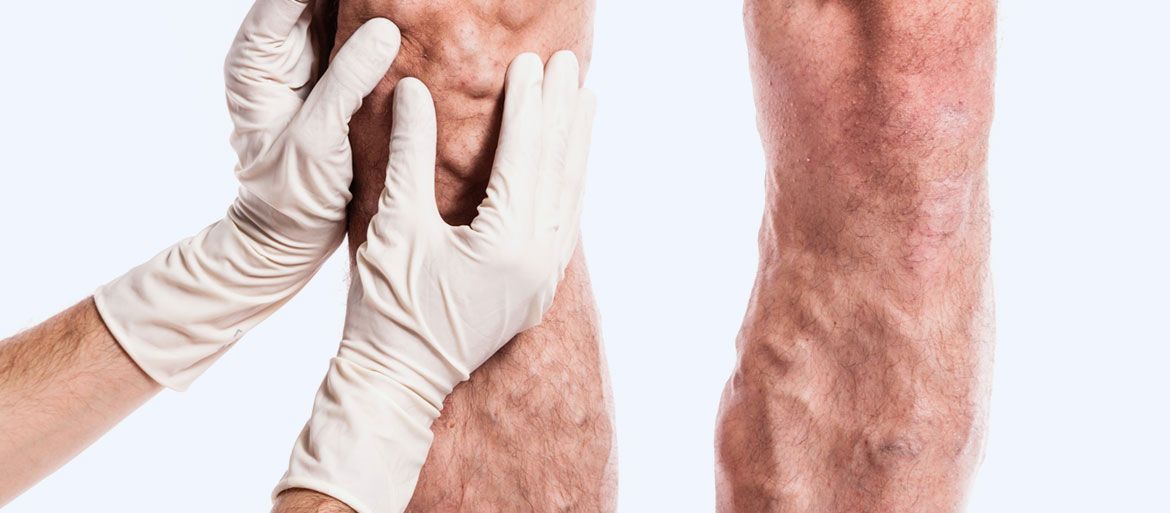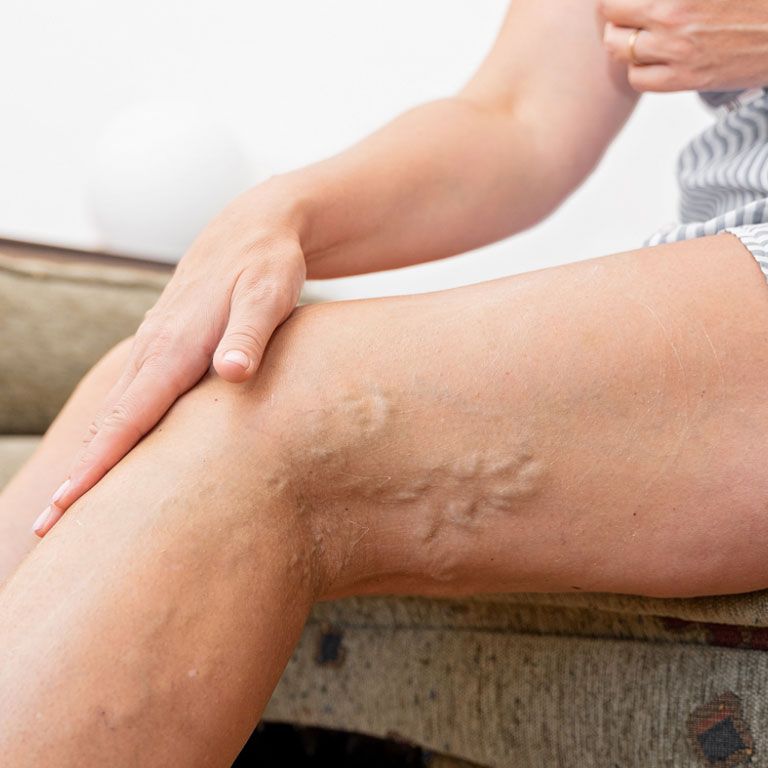
Varicose Veins
Arteries carry blood away from the heart, and around the body. Veins carry blood back to the heart. Varicose veins are swollen veins on the surface of the leg that no longer function efficiently. They usually start on the calf, but can be found right up to the groin. They are usually more obvious when you stand up.
Causes of Varicose Veins
Sometimes blood flow pressure can damage or strain the valves in the veins which should only let the blood flow one way - towards the heart. This means blood can collect in pools in the veins.
Varicose veins are made worse by standing for long periods, by being constipated or overweight and by pregnancy. Women tend to suffer from varicose veins more than men! There are several factors that make people susceptible to spider veins, such as:
- Hereditary
- Occupations that involve a lot standing
- Blood clot history
- Hormonal influences (puberty, pregnancy and menopause)
- Use of birth control pills
- Trauma or injury to the skin
- Conditions that cause increased pressure in the abdomen such as constipation and tight garments like girdles
- Extreme UV exposure

Symptoms of Varicose Veins
You will usually see varicose veins before you get any other problems from them. They appear as wiggly raised lines above the surface of the skin on the legs. You may find that they start to ache as the day goes on. You may also notice that your feet and ankles swell towards the end of the day, especially in hot weather. If varicose veins are left untreated they can become inflamed or even ulcerated.
Varicose veins don't usually cause any pain. Below are visual signs that you may have varicose veins:
- Dark purple or blue colored veins
- Twisted and bulging veins on your legs
Painful signs and symptoms of varicose veins are:
- Aching or swelling in your legs
- Burning, throbbing and cramping in your lower legs
- Itching around the veins
- Skin ulcers around your ankle
Varicose Vein Treatment Options
A surgical and non-surgical treatment is available to treat this condition. Dependent on the severity of varicose vein, the surgical method usually involves a procedure to strip the non-functional vein from the affected area.
The non-surgical method usually involves an injection of special fluid to close the vein down.
Alternatively, there is a less invasive key-hole treatment is available in a growing number of Vive life care hospitals called The VNUS Closure® Procedure. This treatment can be performed under local anesthetic on a walk in walk out basis, and results in less pain, less bruising and a faster return to normal activities than traditional vein stripping surgery.
If you have varicose veins, we can help you. Whether you have bulging veins or spider veins we have the treatment that is right for you. Make an appointment with us today so we can set up a treatment plan that best fits your needs.
On your consultation we will examine the types of varicose veins you have and give you an outline of the treatments and procedures you will need to achieve the best results. Upon results of your venous ultrasound we can begin the scheduling process to start your procedures. We are positive that you will be happy with the results.
Frequently Asked Questions about Varicose Veins
What are varicose veins?
Varicose veins are swollen, bulging, twisted, blue veins that are raised on the surface of the skin. With damaged valves, they hold more blood at higher pressure than normal. As a result, fluid may be forced into the surrounding tissue, resulting in pain, leg swelling and heaviness in the leg.
What causes varicose veins?
To prevent blood from flowing in the wrong direction, veins have numerous valves. If the valves are damaged, blood flows back into superficial veins and back down the leg. This results in veins enlarging and becoming varicose.
Why do varicose veins occur in the legs?
Gravity and the distance from the feet to the heart is the furthest blood has to travel in the body. Consequently, the vessels in the lower leg experience a great deal of pressure. If vein valves around the legs can't handle it, the backflow of blood can cause the surface veins to swell and bulge.
Who is predisposed to varicose veins?
Several factors can cause varicose veins, including genetics, obesity, hormonal changes (puberty, pregnancy and menopause), work or hobbies that require standing for long hours, and history of diseases such as thrombophlebitis (i.e. inflammation of a vein as a blood clot forms.). Due to hormonal changes, women are more predisposed to varicose veins than men.
What are the symptoms of varicose veins?
Other than the visual symptoms of dark purple or blue colored and twisted and bulging veins, varicose veins may ache, and feet and ankles may swell towards day's end. Varicose veins can get sore and inflamed. In some cases, patients may develop venous ulcerations.
Is VNUS Closure® procedure a good alternative treatment for varicose veins ?
The VNUS Closure® procedure is a minimally invasive treatment for superficial venous reflux. The procedure involves inserting a thin catheter into the vein through a small opening to deliver the bipolar radiofrequency energy directly into the vein wall, causing it to heat, collapse, and seal shut.. Each patient should consult their doctor to determine whether or not they are a candidate for this procedure.
Our Huntington Beach Vein Surgeon, Dr. Yasser Salem, received specialty training that keeps him on the leading edge of diagnostic and therapeutic technologies for the treatment of vein disease.
Contact us today to schedule your initial consultation.
We Also Offer:
Our Services
Contact Info
Mon - Fri 9:00 - 5:30
Our Services
Contact Info
Mon - Fri 9:00 - 5:30
All rights reserved | Copyright © 2024 | Website Design By Solution21 Inc |
Disclaimer
|
Terms of Use



